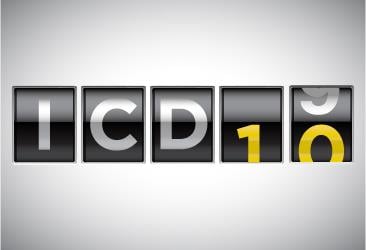Just six weeks remain until Oct. 1, when physician practices must switch from ICD-9 to ICD-10. Understand three common scenarios and how to code them using ICD-10.
In ICD-10, the main categories of change are definition changes, terminology differences and increased specificity. Here is guidance for coding common clinical scenarios:
Hypertension
In ICD-10, hypertension is defined as essential—the concept of “benign or malignant” as it relates to hypertension no longer exists. When documenting hypertension, include the following:
1. Type (such as essential or secondary)
2. Causal relationship (such as renal or pulmonary)
Examples:
I10: Essential (primary) hypertension
I11.9: Hypertensive heart disease without heart failure
I15.0: Renovascular hypertension
Underdosing
Underdosing is an important new concept and term in ICD-10. It allows you to identify when a patient is taking less of a medication than is prescribed. When documenting underdosing, include the following:
1. Intentional, unintentional or noncompliance
2. Reason (such as financial hardship)
Examples:
Z91.120: Patient’s intentional underdosing of medication regimen due to financial hardship
T36.4x6A: Underdosing of tetracyclines, intial encounter
T45.526D: Underdosing of antithrombotic drugs, subsequent encounter
Diabetes
The diabetes mellitus codes are combination codes that include the type of diabetes, the body system affected and the complications affecting that body system. When documenting diabetes, include the following:
1. Type (including type 1 or type 2 and caused by a drug or chemical)
2. Complications (such as other body systems that are affected)
3. Treatment (such as insulin)
Examples:
E08.65: Diabetes mellitus due to underlying condition with hyperglycemia
E09.01: Drug or chemical induced diabetes mellitus with hyperosmolarity with coma
These tips come from the Centers for Medicare & Medicaid’s (CMS) Clinical Concepts for Family Practice guidance. Find much more practical guidance, including coding scenarios, in this guide and others in the series, including internal medicine, OB-GYN, cardiology, orthopedics and pediatrics.
More ways to prepare
CMS will host a call for physicians preparing for ICD-10 from 2:30 to 4 p.m. Eastern time Aug. 27. Experts will discuss coding guidance and tips, answers to coding questions, information about claims that span before and after the implementation date, and resources. Register online.
A free online resource in the AMA’s STEPS Forward collection also has materials to help you prepare.
Additional important resources that can help you get ready over the next six weeks include:
- Six things you should know about the ICD-10 transition and the flexibilities the AMA secured for physicians
- The AMA’s ICD-10 Web page offers important information and resources on implementation planning, from cross-walking between ICD-9 and ICD-10 to testing your readiness.
- CMS also is offering free assistance, including its “Road to 10” website aimed specifically at smaller physician practices. This collection includes primers for clinical documentation, clinical scenarios and other specialty-specific resources to help with implementation. Read more about the agency’s resource offerings.




